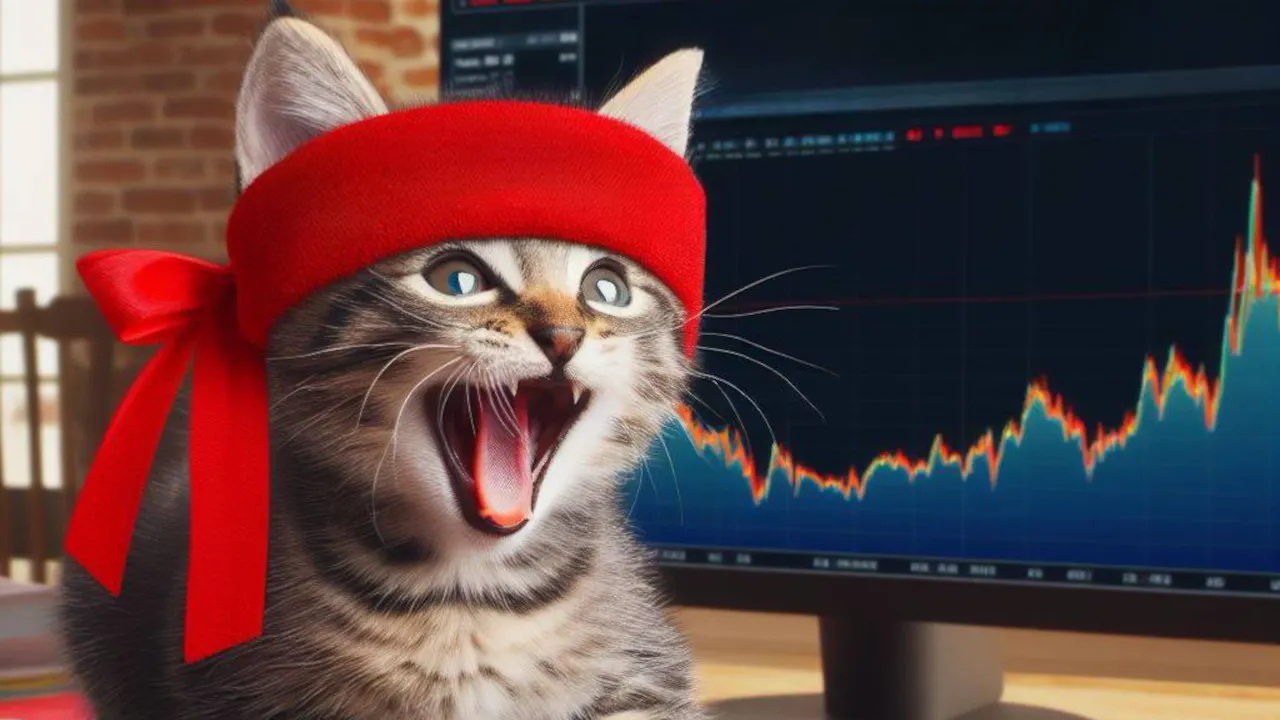A Solana meme coin named after meme stock trader and influencer Roaring Kitty lay dormant for weeks, flatlining near worthlessness. Then, its namesake suddenly reappeared online Sunday after years of silence, sending the token price soaring over 13,000% in hours to a market capitalization in the tens of millions of dollars.
The token, KITTY—created by a self-titled, anonymous “Crypto Twitter Cabal” in late March— popped briefly to a price of about $0.02 immediately following its creation. Soon thereafter, it nosedived to near-zero. For weeks, however, KITTY’s social media accounts promised that the fledgling token would soon become the “biggest comeback story of 2024,” with some unnamed event set to turn its fortune around.
“We’re going to see massive buys coming in soon,” the token’s Twitter account posted on May 6.
Meme coin promoters routinely make such lofty promises. But less than a week later, the unthinkable happened: KITTY’s prophecy actually came true.
On Sunday, a Twitter account belonging to Keith Gill, aka Roaring Kitty—the architect of 2021’s famed, Reddit-fueled GameStop stock short squeeze—posted for the first time in three years, sending all stocks associated with the meme boom soaring.
GameStop stock (GME) briefly tripled in value; GME, also the ticker of a Solana-based tribute coin, surged some 1,900%; and KITTY, within moments, rebounded from near-worthlessness to a market capitalization of roughly $40 million.
The benefits of Roaring Kitty’s apparent surprise return to Twitter—after three years of radio silence across all social media channels—were immediate and immense, in the case of KITTY.
Within a 24 hour period across Solana decentralized exchanges (DEXs) Raydium and Orca, KITTY saw over $60 million in trading volume, according to DexScreener. Since reaching those highs early Tuesday, however, KITTY has dropped to a market cap of $19.3 million at writing.
Though Roaring Kitty’s sudden return on Sunday caught most by surprise—and had obvious, particular importance for the team behind KITTY—the token’s social media accounts did not appear particularly surprised by the development. They merely posted the news, and began enthusiastically tweeting the token’s address at a much faster frequency.
Who's sitting like this rn? 😼
CA: EKEWAk7hfnwfR8DBb1cTayPPambqyC7pwNiYkaYQKQHp#RoaringKitty #Roar #GME https://t.co/Sk9mmoNH2E
— Roaring Kitty! (@RoaringKSol) May 13, 2024
Decrypt reached out to the Roaring Kitty coin team regarding their affiliation with Keith Gill, and any prior knowledge they may have had regarding Roaring Kitty’s reappearance online, but did not immediately receive a response.
KITTY is one of a flurry of meme coins affiliated with public figures, pop culture, and internet memes that have gained steam in recent months. Such tokens can quickly accumulate millions of dollars in value in the wake of related news stories, but tend to (eventually) meet the same fate: crashing to zero.
Edited by Andrew Hayward

